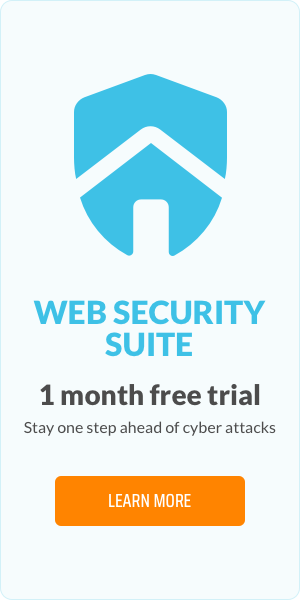How to mitigate the risk of cyber attack in 5 quick steps

Identifying cyber attacks and mitigating their risks is simply a fact of life now. And while there are no silver bullets to fend off an attack, there are certain steps you can – and should – take to make sure an attack’s outcome isn’t catastrophic. Anticipating risks today will only help protect your online identity in the future.
Cyber attacks are real and persistent
Today we share more personal information over the Internet than ever before. Unfortunately, poorly secured websites – which are increasingly penalised by Google Chrome and other browsers – make it easy for anyone to gather, for example, the account information we enter while banking online or the social security numbers we use when applying for a job over the Internet.
And, as recent high profile cyber attacks have reminded us, we are all vulnerable to attack, the Internet a veritable jungle of risks which only seem to multiply with time. Our ever-increasing dependency on connected devices and use of convenient – but unsafe – public networks are partially to blame.
Don’t think you’re at risk? Consider for a moment if you have ever:
Opened a questionable email
Have you ever opened, clicked on a link, and/or opened an attachment inside an email which appeared to be authentic communication from, perhaps, a bank, subscription service, or online payment site but, in fact, wasn’t? If yes, there is a good chance you’ve been compromised, falling for one of the most common ways cyber criminals go after unsuspecting victims: the phishing scam.
Clicked on an anti-virus pop up
Have you ever seen - and clicked on - an anti-virus pop up? If so, you may have installed malware (various forms of harmful software such as viruses and ransomware) which can monitor your online actions and keystrokes, and gather and send your confidential data straight to the attacker.
Reused login passwords
We’ve all heard that we need to create unique passwords for every application and website which requires one but, still, many of us continue to use the same passwords over and over again, a fact that attackers are all too aware of. Using one password for every login is, basically, like using one key to unlock every door in your life: your home, your car, your mailbox. If someone is able to get a hold of that one key, your entire world is easily accessible.
These kinds of Internet-related threats are real and persistent. And make no mistake about it: cyber criminals will go after the easiest, most vulnerable targets. If you aren’t taking precautions to protect yourself, you are essentially low-hanging fruit just waiting to be picked.
5 essential security measures you must take
To limit your chances of falling victim to cyber criminal activity, we recommend taking the following simple and proactive steps:
Use a VPN to protect your online privacy
A Virtual Private Network (VPN) allows you to send and receive data over the Internet as if you were on a private network. Just as a firewall protects the data on your computer, a VPN protects your online data. Your information is encrypted, protecting you from hacking. Do keep in mind, however, that not all VPNs are equally useful. Look for one that (1) uses a secure protocol; (2) doesn’t log your activity; and (3) isn’t too restrictive with which devices it allows on its network.
Back away from sites which don’t use an SSL
A Secure Socket Layer (SSL) encrypts data between browsers and websites. This means that your bank account information, personal details, login passwords, and anything else you want kept private will be less likely to fall prey to criminal interference. How do you know if a site uses an SSL certificate ? Look for the URL to begin with the letters HTTPS and for your browser to display a green lock icon to the left of the URL.
Purchase domain privacy when you register your domain
You have the option to purchase domain privacy which protects the contact details we are obligated to submit to WHOIS with every domain registration, details which are made public. Domain privacy ensures that the WHOIS database will, instead, show proxy contact information for your domain, removing from public view your personal information. Not every registry allows this option, so be sure to review our list of domain extensions to see which ones do.
Create better passwords and change them frequently
If your password is your six-digit birthday or your first name and, worse, you are using that same password every time you log onto a site, your personal information is as good as already stolen. Yes, it’s a hassle to come up with good passwords – passwords which contain diverse combinations of numbers, symbols, and unique characters – but doing so is essential. So is changing those passwords every few months.
Protect your EuroDNS account with two-step verification
If you are in the habit of reusing passwords, you really should consider activating two-step verification (TSV) for your EuroDNS account. Imagine the damage which could be inflicted should a hacker take control of your domain name. To avoid this risk, we offer TSV which requires you to confirm your identity with a password and unique verification code. It’s very easy to use and set up and, we think, an absolute necessity.
Take action to avoid becoming a victim
Protecting yourself from cyber threats is about strategically managing risks. No one can know with 100% certainty when or how they will fall victim to an attack, but everyone should understand what common cybersecurity risks are out there and implement strategies to mitigate them.
Instead of panicking after the fact, take the necessary steps now to ensure whatever harm comes your way isn’t too damaging.
